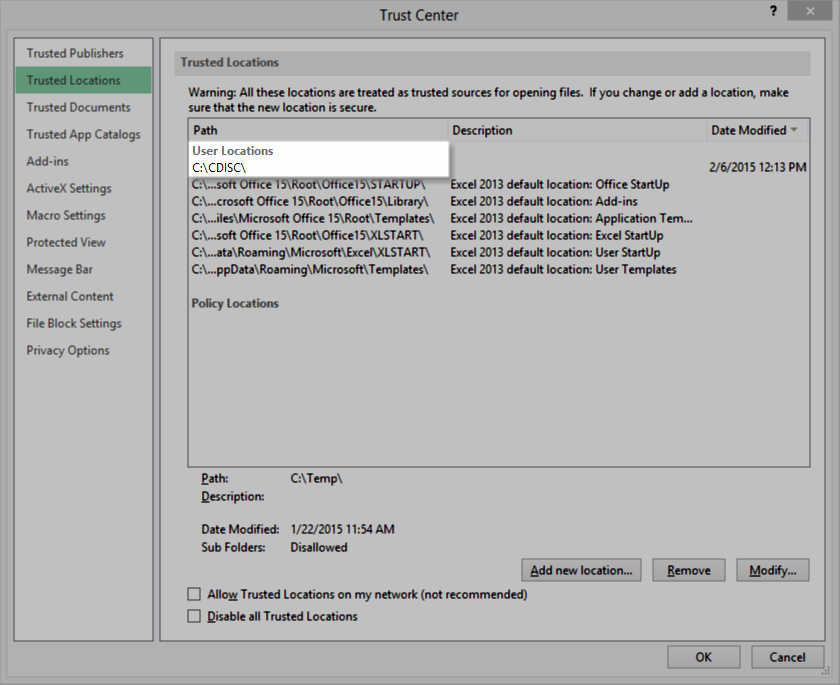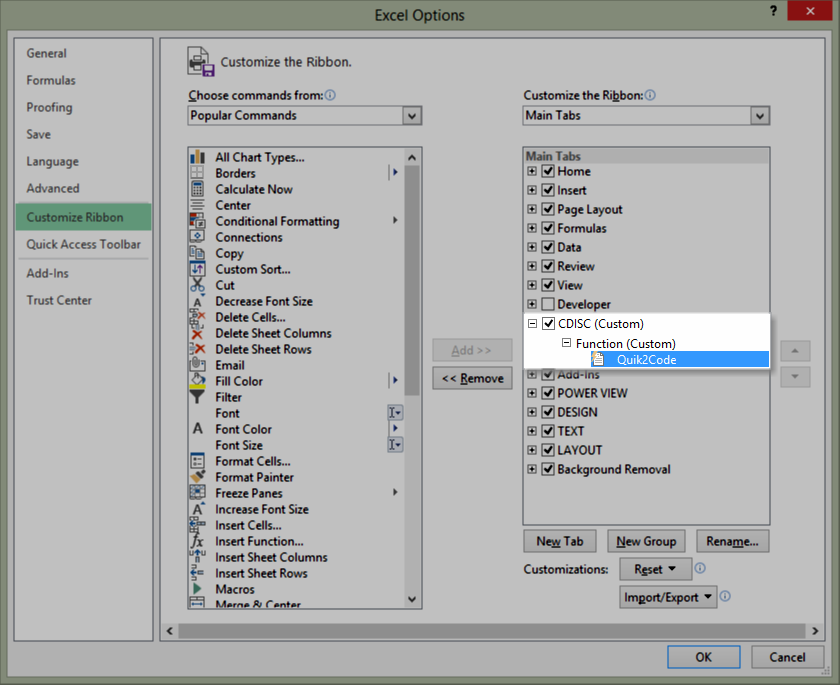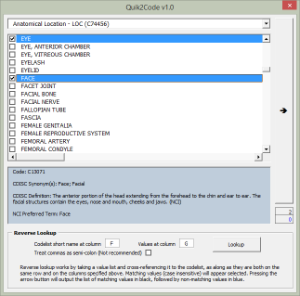You are viewing an old version of this page. View the current version.
Compare with Current
View Page History
« Previous
Version 2
Next »
Purpose
This page purpose's is to introduce an Excel macro called "Quik2Code" with instructions to install and to provide use cases with examples.
Introduction
A research concept can be viewed as a collection of data elements with controlled vocabularies applied. At CDISC, we use the CDISC Controlled Terminology for identifying controlled vocabularies. To perform this task, a metadata developer often needed to cross-reference multiple spreadsheets; and, manually transcribe codelist contents by either re-typing or copy-and-pasting data. This mode of operation is not only tedious, but error-prone to typographical errors.
Quik2Code is designed to significantly reduce the manual intervention needed to create a research concept. It is an Excel macro with a user interface using data from the CDISC Controlled Terminology spreadsheet published quarterly. Users will check off codelist values (controlled vocabularies) from a codelist. With click of a button, the macro will populate the selection in a predetermined format. Users will also be able to reverse lookup an existing list of controlled vocabularies. The tool will select codelist values found, as well as identify non-matching values that are either new vocabularies or typographical errors.
Installation
The following describes the steps to install Quik2Code on a Microsoft Windows PC:
| Steps | Visual Aid (Click image to enlarge) |
|---|
A. Create folder and place Quik2Code Excel macro file - Using File Explorer, on the C: drive, create a CDISC folder, i.e., C:\CDISC
- Place the Excel macro file quik2code.xlsm in it
| |
B. Add CDISC folder as a trusted folder for launching Excel macro - Open Excel
- Select File | Options. The Excel Options dialog box appears
- Select Trust Center on the left pane
- Click Trust Center Settings... The Trust Center dialog box appears
- Select Trusted Locations on the left pane
- Click Add new location... The Microsoft Office Trusted Location dialog box appears
- Type or browser to C:\CDISC as Path
- Click OK:
- The Microsoft Office Trusted Location dialog box closes
- C:\CDISC appears on the list of paths under Trusted Locations
- Click OK to close the Trust Center dialog box
|  |
C. Create a customize Excel ribbon for Quik2Code (assuming Excel 2010 and 2013 versions) - Download this Excel UI customization file and place it into C:\CDISC folder
- Repeat Steps B1, B2 to bring back the Excel Options dialog box, if it is not already showing
- Select Customize Ribbon
- Click Import/Export at the lower right corner of the Excel Options dialog box
- Select the Import customization file option. The File Open dialog box appears
- Browse to the Excel UI customization file saved in Step C1
- Click Yes when prompted to replace ribbon
- An entry labeled CDISC (Custom) appears on the right side of the Excel Options dialog box
- Expanding the node will reveal Function (Custom)
- Expanding again will reveal Quik2Code
- Click OK to close the Excel Options dialog box
|  |
D.Verify Quik2Code Install - Select the ribbon labelled "CDISC" from the top menu
- Click the Quik2Code icon
- The CDISC Controlled Codelist spreadsheet appears and may obstruct Quik2Code. If so, minimize the CDISC Controlled Codelist spreadsheet
- The Quik2Code's user interface appears
| 

|



